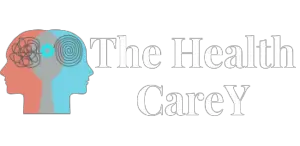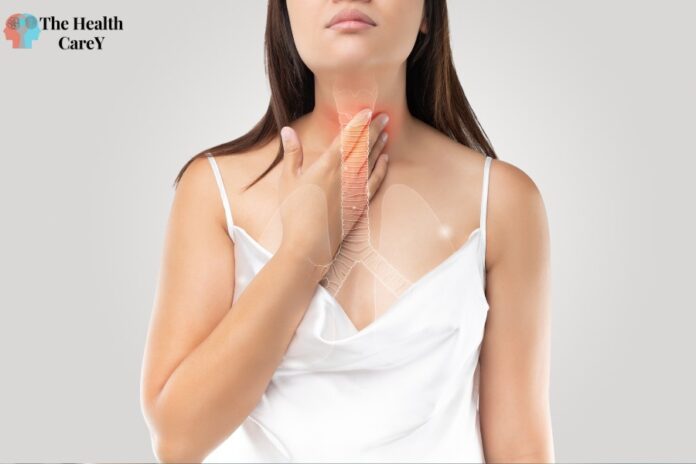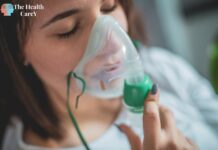What Are the 7 Functions of the Respiratory System? A Comprehensive Overview.
If you’re reading this, you’re breathing. Breathing is something we do without even thinking about it. But have you ever wondered how breathing works? The respiratory system brings oxygen into your body and removes carbon dioxide. But did you know that the respiratory system has seven functions?
The first function of the respiratory system is to breathe. Breathing is the process of inhaling oxygen and exhaling carbon dioxide. The second function is to provide oxygen to the body. Oxygen is essential for the body to produce energy. The third function is to remove carbon dioxide from the body. Carbon dioxide is a waste product that must be removed from the body.
The fourth function is to regulate blood pH. Your body needs to maintain a certain pH level in the blood, and the respiratory system helps to regulate this. The fifth function is to protect the body from harmful substances. The respiratory system has mechanisms to protect the body from harmful substances in the air. The sixth function is to produce sound. The respiratory system is responsible for producing the sounds we use to communicate. And finally, the seventh function is to smell. The respiratory system plays a role in our sense of smell.
Function 1: Gas Exchange
The respiratory system’s primary function is facilitating gas exchange between the lungs and the bloodstream. This process is essential for the delivery of oxygen to the cells of the body and the removal of carbon dioxide, which is a waste product of cellular metabolism. The respiratory system works with the circulatory system to deliver oxygenated blood to tissues and organs. In contrast, deoxygenated blood is returned to the lungs for reoxygenation.
The gas exchange process occurs in the alveoli, which are tiny air sacs in the lungs. Oxygen from the air enters the alveoli and diffuses through the walls of the sacs and into the bloodstream. At the same time, carbon dioxide from the bloodstream diffuses into the alveoli and is exhaled out of the body through the respiratory system. This exchange of gases is facilitated by the presence of a concentration gradient, which allows for the movement of gases from areas of high concentration to areas of low concentration.
The efficiency of gas exchange depends on several factors, including the health of the respiratory system, the concentration of gases in the air, and the body’s overall health. Certain respiratory diseases, such as chronic obstructive pulmonary disease (COPD) and asthma, can impair the ability of the lungs to exchange gases effectively, leading to shortness of breath and other symptoms. Exposure to pollutants and other environmental toxins can also negatively impact the respiratory system and impair gas exchange.
Function 2: Regulation of Blood pH
The respiratory system plays a crucial role in regulating the pH of your blood. The pH of your blood is essential for your body to function correctly. If the pH of your blood is too high or too low, it can have severe consequences on your health. The respiratory system works together with the renal system to maintain the pH of your blood within the normal range.
When your body produces more acid, your blood pH decreases, making it more acidic. The respiratory system helps regulate your blood’s pH by removing carbon dioxide (CO2) from your body. Carbon dioxide is an acidic waste product produced by your body’s metabolism. When you breathe in, you inhale oxygen (O2); when you breathe out, you exhale carbon dioxide. The respiratory system helps reduce your blood’s acidity by exhaling carbon dioxide.
The respiratory system can adjust the pH of your blood within minutes by exhaling CO2 from your body. The renal system can also adjust the pH of your blood through the excretion of hydrogen ions (H+) and the conservation of bicarbonate, but this process takes hours to days to have an effect.
| Respiratory System | Renal System |
|---|---|
| Removes carbon dioxide from the body | Excretes hydrogen ions (H+) |
| Regulates pH within minutes | Takes hours to days to have an effect |
Together, the respiratory and renal systems work to maintain the pH of your blood within the normal range, which is essential for your body to function correctly. If the pH of your blood is too low (acidic), it can cause respiratory acidosis. If the pH of your blood is too high (alkaline), it can cause respiratory alkalosis. Both conditions can have severe consequences for your health.
Function 3: Voice Production
The respiratory system also plays a crucial role in voice production. Your larynx, commonly known as the voice box, creates vocal sounds. The larynx contains vocal cords that vibrate when air passes through them, producing sound waves. The pitch and volume of the sound depend on the tension of the vocal cords and the amount of air passing through them.
The process of voice production involves three steps:
- Air is drawn into the lungs through the respiratory system.
- The diaphragm and intercostal muscles contract, causing air to be expelled from the lungs and pass through the larynx.
- The vocal cords vibrate, producing sound waves shaped into speech by the tongue, lips, and other structures in the mouth and throat.
Several factors can affect voice production, including age, gender, physical health, and environmental factors such as air pollution and smoking. Disorders of the larynx, such as vocal nodules or polyps, can also impact voice quality and require medical treatment.
The respiratory system’s ability to produce vocal sounds is essential for communication and expression. Regulating air flow through the larynx and vocal cords allows us to speak, sing, and convey our thoughts and emotions to others.
Function 4: Olfaction
The respiratory system plays a crucial role in the sense of smell, also known as olfaction. The olfactory system consists of the nose and the nasal cavities, which support the olfactory mucous membrane for the perception of smell. When you inhale, the air passes through your nose and over the olfactory receptors, specialized cells that detect different smells.
The olfactory system is closely linked to the respiratory system, as nasal cavities act as passages. This means that the air you breathe provides oxygen to your body and carries different odours you can detect through your sense of smell. The olfactory system also influences taste perception, as many flavours combine taste and smell.
It is important to note that the sense of smell can be affected by various factors, such as nasal congestion, allergies, and certain medical conditions. If you experience a loss of smell, it is recommended to consult a healthcare professional to determine the underlying cause.
Function 5: Protection Against Infection
The respiratory system is essential in protecting your body against infections caused by harmful microorganisms such as bacteria, viruses, and fungi. The air you breathe in contains many of these microorganisms, and if they are allowed to enter your body, they can cause a range of respiratory infections and diseases.
To protect against these infections, the respiratory system has several defence mechanisms. One of the most important of these is the mucociliary escalator, which consists of a layer of mucus that lines the respiratory tract and tiny hair-like structures called cilia that move the mucus upward and out of the respiratory system. This helps trap and remove harmful microorganisms before entering your body.
In addition to the mucociliary escalator, the respiratory system has other defence mechanisms, such as coughing, sneezing, and producing antibodies. These mechanisms help to further protect against infections by removing harmful microorganisms from the respiratory tract and preventing them from entering the body.
However, the respiratory system can still be vulnerable to infections despite these defence mechanisms. Certain factors, such as smoking, exposure to pollution, and weakened immune systems, can increase the risk of respiratory infections. Therefore, it is essential to protect your respiratory system by avoiding smoking and exposure to pollutants, getting vaccinated against respiratory infections, and practising good hygiene.
Function 6: Regulation of Blood Pressure
The respiratory system plays a crucial role in regulating blood pressure. The vasomotor centres in the medulla oblongata control the diameter of blood vessels, which affects peripheral resistance, pressure, and flow, and ultimately affects the cardiac output. Most of these neurons act via the release of the neurotransmitter norepinephrine from sympathetic neurons.
Changes in blood pressure and flow are detected by baroreceptors located in the walls of certain blood vessels. These baroreceptors send signals to the cardiovascular centres in the medulla oblongata, which respond by adjusting the activity of the vasomotor centres. For example, if blood pressure drops, the vasomotor centres will increase sympathetic activity, causing vasoconstriction and an increase in blood pressure.
In addition to the baroreceptor reflex, the respiratory system helps regulate blood pressure by releasing vasoactive compounds. For example, the lungs produce an angiotensin-converting enzyme (ACE) peptide, which converts angiotensin I to angiotensin II. Angiotensin II is a potent vasoconstrictor that increases blood pressure.
Function 7: Activation of Hormones
The respiratory system plays a crucial role in activating hormones in your body. Hormones are chemical messengers that regulate various physiological processes in your body. The respiratory system helps activate hormones by carrying oxygen to the cells that produce hormones. These cells require oxygen to produce hormones, and the respiratory system ensures they receive adequate oxygen.
The respiratory system’s oxygen binds with the molecules in the cells that produce hormones that activate them. Once activated, these cells produce hormones released into the bloodstream. These hormones travel to different parts of your body and regulate various physiological processes.
For example, the hormone adrenaline is produced by the adrenal glands, which are located on top of your kidneys. Adrenaline is released into the bloodstream in response to stress or danger. Adrenaline increases your heart rate, dilates your airways, and increases blood flow to your muscles. This fight or flight response is essential for survival in dangerous situations.
The respiratory system also plays a role in the deactivation of hormones. Once hormones have served their purpose, they must be removed from your body. The respiratory system helps in the removal of hormones by carrying carbon dioxide, which is a waste product of cellular respiration. The bloodstream carries carbon dioxide to the lungs, which is eliminated from your body when you exhale.
Also Read:
Which Of The Following is Not a Function Of The Respiratory System
How to Check Respiratory Rate on Apple Watch




















